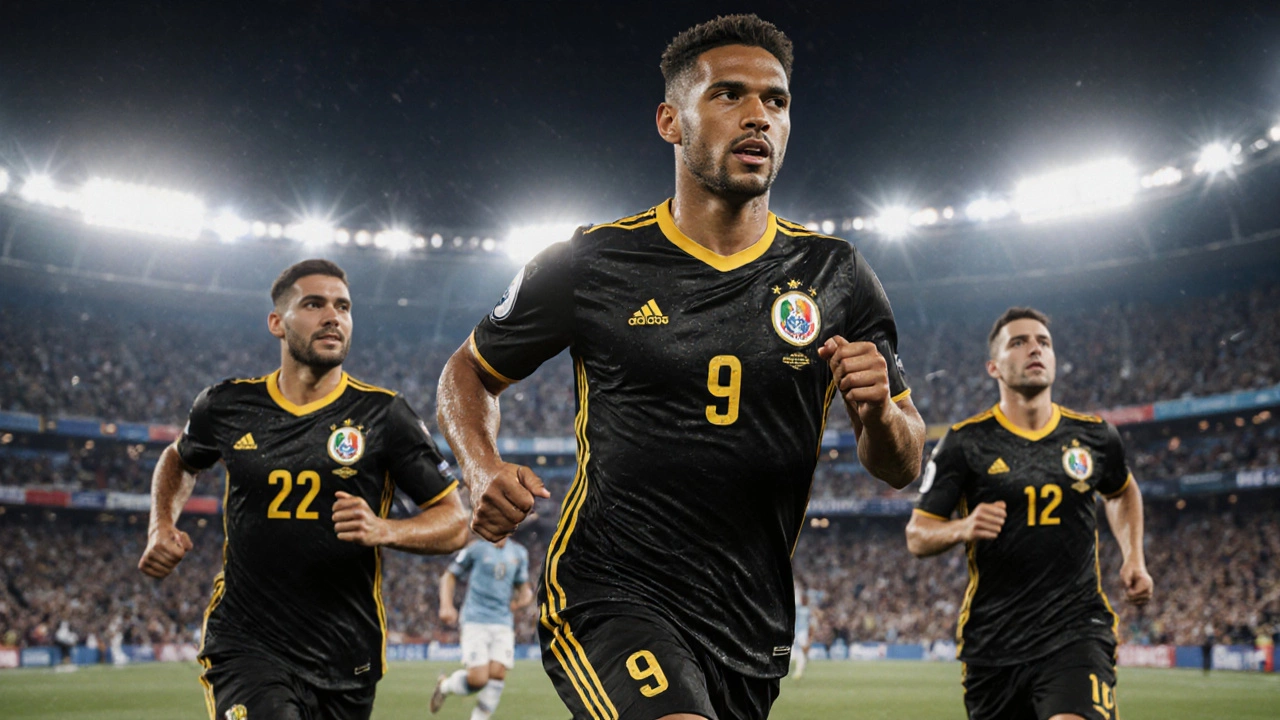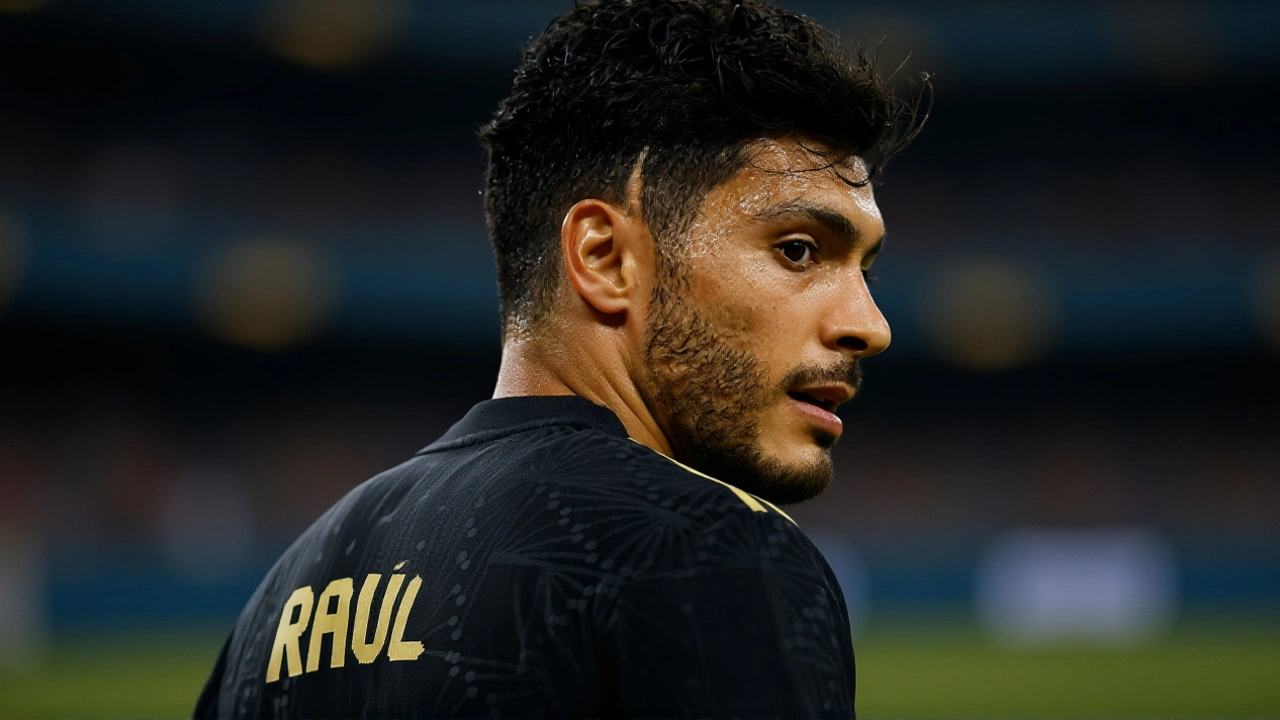Mexico and Uruguay Fight to 0-0 Draw in Physical 2025 Friendly
 Nov, 16 2025
Nov, 16 2025
Two of CONCACAF and CONMEBOL’s most storied football nations met on a chilly November night in northern Mexico—and produced a match that was more about grit than glory. Mexico vs. Uruguay ended 0-0 on Saturday, November 15, 2025, at the TSM Corona Stadium in Torreón, Coahuila, after 93 minutes of tense, foul-plagued football. No goals. No extra time. Just 38 fouls, three yellow cards, and a shared sense of frustration. For both teams, this was never about winning—it was about preparing for the road ahead. But what happened on the pitch revealed far more than just preparation.
Defensive Discipline Over Flash
From the first whistle, the tone was set: this wasn’t a showcase. It was a siege. Mexico lined up in a compact 4-3-3, with Raúl Jiménez as the lone striker, flanked by Hirving Lozano and Roberto Alvarado. Uruguay, ever pragmatic, countered with a backline anchored by Mathías Olivera, whose calmness under pressure earned him the Player of the Match nod from FotMob. Neither side wanted to lose, but neither could find a way to win.At the 35th minute, Jiménez got free in the box after a clever flick from Edson Álvarez. His shot—clean, powerful—was blocked by José Giménez’s outstretched leg. The crowd gasped. The referee blew for offside. Replays showed it was level. But no VAR in friendlies. So the moment vanished.
A Battle of Bodies and Boundaries
The physicality was startling. By halftime, the referee had already shown three yellows—two to Uruguay, one to Mexico. Nahitan Nández earned his card at 58 minutes with a studs-up challenge on Marcel Ruiz. At 66 and 67 minutes, each team had a golden chance: Mexico’s Germán Berterame curled a shot just wide after a brilliant run, then Uruguay’s Rodrigo Aguirre fired a low drive that José Rangel parried with his fingertips. It was football at its most raw—no flair, no fireworks, just survival.Substitutions told the story. Mexico made three changes at 65 minutes—swapping out Ruiz, Sánchez, and Jiménez for Obed Vargas, Orbelín Pineda, and Berterame. Uruguay responded with fresh legs too. But the energy drained as the clock ticked past 80. By the 89th minute, players were limping. One Mexican defender had to be helped off the field after cramping. The stadium, packed with 28,400 fans, fell into a heavy silence. No chants. No boos. Just exhaustion.

What This Match Really Meant
This wasn’t just a friendly. It was a diagnostic. For Mexico, under interim coach Jaime Lozano, the focus was on building chemistry among midfielders like Edson Álvarez and Erik Lira, who replaced Álvarez in the 70th minute. For Uruguay, it was about testing depth—especially with stars like Rodrigo Bentancur and Emiliano Martínez playing full 90 minutes ahead of World Cup qualifiers.“We didn’t need goals,” said Mathías Olivera after the match. “We needed structure. We needed to learn how to absorb pressure. This was the perfect test.”
For Mexico, the absence of goals was less concerning than the lack of fluidity. Hirving Lozano, who started on the left, was marked out of the game by Joaquin Piquerez. He had one shot on target—off-target at 20 minutes—and spent the second half chasing shadows. Raúl Jiménez, now 33, looked sharp in movement but lacked support. The midfield trio of Álvarez, Ruiz, and Sánchez was overworked. They covered 112 kilometers combined.

The Bigger Picture
This match was one of five friendlies scheduled for both nations in November 2025. For Mexico, it’s a bridge between the Gold Cup and the 2026 World Cup cycle. For Uruguay, it’s about rebuilding after the departures of Suárez and Cavani. The 0-0 result might seem meaningless, but the data tells another story: Mexico’s possession dropped to 41% in the second half. Uruguay completed just 73% of their passes—below their season average. Both teams are working on transition play, and this match exposed the gaps.“We didn’t lose,” said Jaime Lozano in his post-match presser. “But we didn’t win either. That’s the problem.”
As fans left the TSM Corona Stadium, many muttered the same thing: “Where’s the spark?” The answer may lie in next month’s training camp in Monterrey. Or in the January call-ups. But for now, the silence after the final whistle was louder than any goal could have been.
Frequently Asked Questions
Why was the match listed as November 16 at 01:00 UTC if it was played on November 15 in Mexico?
The match kicked off at 7:00 PM local time in Torreón (CST, UTC-6), which corresponds to 1:00 AM UTC on November 16. International databases like FotMob use UTC as the global standard, so while fans in Mexico saw it on the 15th, official records show the 16th. It’s a time-zone quirk, not an error.
Who was named Player of the Match, and why?
Uruguay’s fullback Mathías Olivera was awarded Player of the Match by FotMob. He made seven clearances, blocked two shots, and completed 92% of his passes under intense pressure. His defensive discipline neutralized Mexico’s wide attacks, especially against Lozano. In a match with no goals, his consistency stood out.
How did the substitutions impact the game?
Mexico’s triple substitution at 65 minutes shifted their shape from 4-3-3 to a more defensive 4-4-2, sacrificing attacking width for midfield control. Orbelín Pineda added creativity, but the team lost pace. Uruguay’s changes were more reactive—adding fresh legs to maintain pressure. Neither change unlocked the other’s defense, highlighting how both teams were stuck in a tactical stalemate.
What does this result mean for Mexico’s World Cup preparation?
It’s a warning. Mexico struggled to create clear chances against a team not at full strength. With only one goal in their last three friendlies, the attack lacks rhythm. Raúl Jiménez is aging, Lozano is inconsistent, and no true No. 9 has emerged. Coaches now face a tough decision: rebuild the front three or shift to a different system entirely before 2026.
Is this 0-0 draw unusual for Mexico vs. Uruguay?
Actually, yes. In their last six meetings since 2010, only one ended goalless. Their 2019 friendly in Miami saw Mexico win 2-1, and their 2022 World Cup qualifier ended 1-1. A 0-0 draw is rare—especially with 38 fouls. This match was more physical and less technical than usual, suggesting both teams prioritized defense over expression.
What’s next for both teams after this match?
Mexico faces Colombia in a friendly on November 20 in Houston, then heads into World Cup qualifiers in March 2026. Uruguay plays Chile on November 19 and will focus on integrating youth players like Juan Sanabria before their 2026 qualifiers begin in March. Both teams will use this match as a blueprint for what not to do: too many fouls, too little creativity.